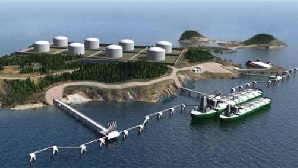 The Excellence is the latest floating storage and regasification unit (FSRU), a type of carrier that has proliferated since 2015 as many countries switch to a cleaner and increasingly cheaper fuel than oil and coal.
The Excellence is the latest floating storage and regasification unit (FSRU), a type of carrier that has proliferated since 2015 as many countries switch to a cleaner and increasingly cheaper fuel than oil and coal.
But the young FSRU industry has been beset by more project delays than successes in the past 12 months as fluctuating energy prices, shipping rates, government policies and not least strong demand for gas in China reshape the sector.
With the number of countries importing LNG having risen to 42 from 30 in three years, “plug and play” projects, in which regasification vessels link to well-worn physical and commercial infrastructure, are expected to continue if at a slower pace.
Since a golden period between 2015 and 2017, when almost half of the world’s 34 FSRUs came onstream, projects in Ghana, Pakistan and Ivory Coast have been scrapped and in countries such as Chile, Croatia and South Africa, delayed.
FSRUs are relatively new – the first was put in operation in 2005 by Excelerate, which figured out how to fit an entire LNG terminal onto a single ship.
On the face of it, they have a big advantage over onshore import terminals – cheaper by half at around $300-400 million, twice as quick to deliver and flexible to boot because the vessel can journey to other destinations once it is not needed.
The rush of new projects between 2015 and 2017 together with predictions of LNG oversupply also attracted trading houses wanting to secure markets for the rising volumes they bought and sold.
Trafigura, Vitol and Gunvor have competing plans for FSRUs in Pakistan after the country became an LNG importer in 2016 but have failed to get projects in Bangladesh off the ground.
But there has been a proliferation of much smaller projects: LNG-to-power ventures, FSRUs for single users such as gas-intensive fertilizer plants and “petrol stations” for ships using LNG as bunker fuel in northern Europe.
For the global LNG industry, is the FSRU honeymoon over?
